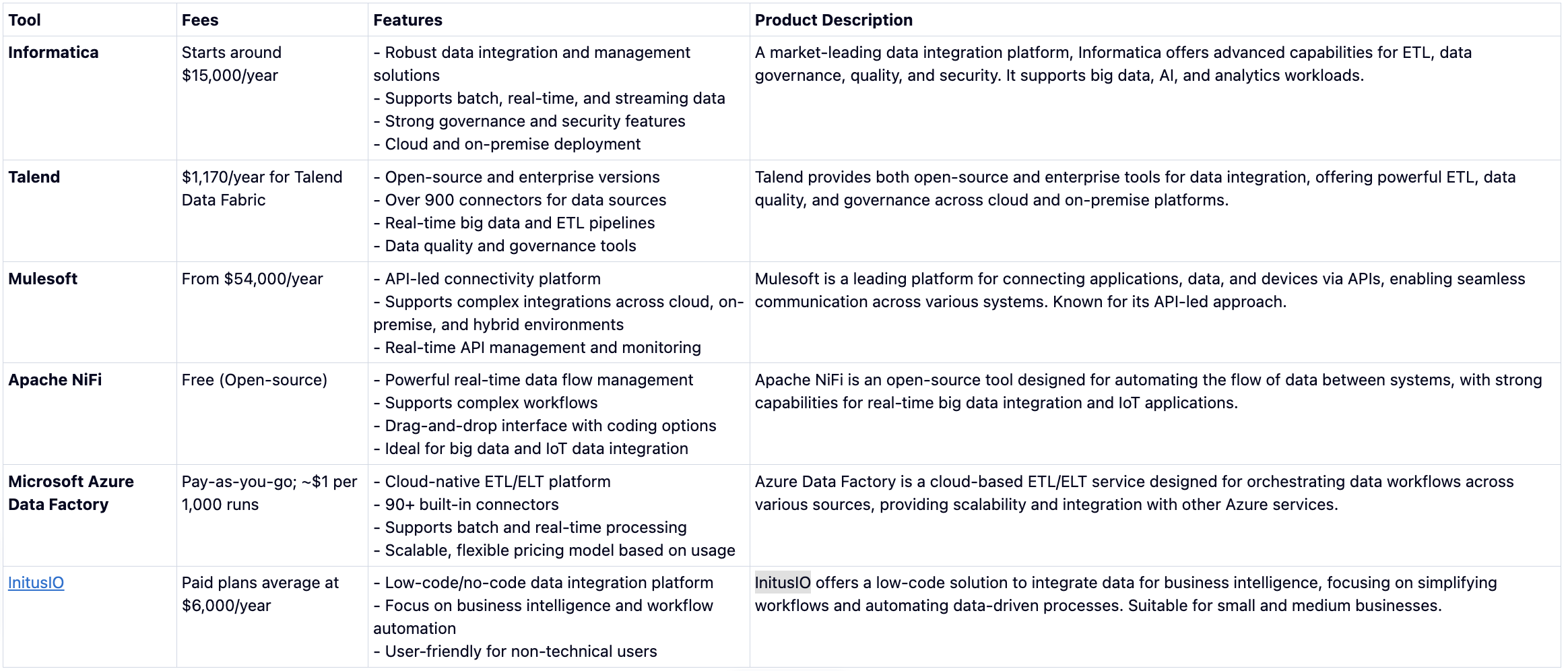Choose a data integration partner that aligns with your needs in terms of compatibility, scalability, data types, ease of use, security, and vendor reputation. Invest in training, monitor performance, and foster collaboration to optimize your data integration framework.
The fact is that organizations are inundated with data from multiple sources—CRMs, ERPs, social media, and other applications. For Chief Technology Officers (CTOs), Chief Information Officers (CIOs), and Chief Operating Officers (COOs), the challenge lies in streamlining operations through effective enterprise system integration. The right integration partner can make all the difference in enhancing operations and achieving data integrity. This blog delves into the critical factors to consider when selecting a data integration partner and platform.
Understanding Data Integration
Before diving into the selection criteria for an integration partner, it’s essential to understand what data integration is. Data integration is the process of combining data from different sources, making it cohesive and usable for analysis and decision-making. An effective data integration solution ensures that your organization can access high-quality data, which is crucial for driving operational efficiency.
The Importance of Data Integrity
Data integrity refers to the accuracy, consistency, and reliability of data throughout its lifecycle. A clear data integrity definition highlights that it is paramount for organizations to uphold the integrity of their data, particularly when integrating various systems. Poor data integrity can result in misleading analytics, operational inefficiencies, and decision-making challenges. Therefore, organizations must prioritize data integrity when considering their data integration strategies.
The Landscape of Data Integration Solutions
With the rise of digital transformation, a plethora of data integration tools and platforms have emerged, each claiming to deliver comprehensive data integration capabilities. According to Gartner data integration reports, the market has seen significant advancements, including the advent of API data integration capabilities, which allow for more agile and flexible data exchanges between systems
Evaluating Data Integration Vendors
When it comes to selecting a data integration vendor, a strategic approach is necessary. Here are some key factors to consider:
1. Compatibility with Existing Systems: Ensure that the data integration platform can seamlessly interface with your current applications. Compatibility is crucial for achieving efficient data integration processes.
2. Scalability: As your organization grows, your data integration needs will evolve. Choose a solution that can scale with your business and handle increasing data volumes without compromising performance.
3. Data Integration Software Capabilities: Assess whether the vendor provides robust data integration software that includes features such as real-time data processing, batch processing, and automated workflows. Look for data integration platforms that offer a comprehensive suite of tools to manage diverse data operational requirements.
4. Support for Various Data Types: Your organization may deal with structured, semi-structured, and unstructured data across multiple systems. The selected integration solution should support various data formats and sources.
5. Ease of Use: Look for user-friendly data integration tools that allow non-technical users to participate in the integration process. This democratization of data handling promotes collaboration and speedier processes.
6. Security and Compliance: In today’s data-driven world, ensuring data security is non-negotiable. Verify that your integration partner adheres to industry standards and compliance regulations to protect sensitive information.
7. Data Quality and Governance: The integration solution should include features that help maintain data quality and integrity. This might involve automated checks or data governance tools to ensure compliance with organizational standards.
8. Cost and ROI: Evaluate the total cost of ownership of the data integration solution, including licensing, training, and ongoing support. Assess the expected ROI by considering the potential efficiency gains and cost savings resulting from improved data integration.
9. Vendor Reputation: Research potential data integration vendors through customer reviews, case studies, and success stories. Recognize vendors that are leaders in the magic quadrant for data integration, as recognized by analysts such as Gartner, for their vision and execution capabilities.
10. Post-Implementation Support: Consider the level of support a vendor provides after the integration is complete. Training, technical assistance, and ongoing maintenance are crucial to maximize the effectiveness of your data integration strategy.
The Role of Data Integrators
In the complex ecosystem of enterprise systems, having a knowledgeable data integrator or team can enhance your ability to choose the right integration partner. This integrator should understand your business processes, data landscape, and integration requirements. With the right expertise, they can uncover hidden pitfalls, identify the best data integration solutions, and ensure smooth implementation and operation.
Data Integration Solutions to Consider
As you begin your search for a data integration partner, it’s essential to explore the various platforms available in the market. Here are a few leading data integration platforms to consider:

Optimizing Your Data Integration Framework
Once you’ve chosen an integration partner and solution, it’s time to optimize your data integration framework for better results. Here are a few best practices to keep in mind:
1. Define Clear Objectives: Establish precise goals for what you want to achieve through data integration. This will direct your integration efforts and help measure success.
2. Create a Data Governance Strategy: A sound data governance framework will ensure that data integrity is maintained and compliance requirements are met across all integrated systems.
3. Invest in Training: Equip your team with the necessary skills to manage data integration solutions effectively. Training ensures that your team can harness the full potential of the tools at their disposal.
4. Monitor and Assess: Continuous monitor your data integration processes and assess performance against your predefined objectives. Make adjustments as needed to improve efficiency and effectiveness.
5. Foster Collaboration: Encourage cross-functional collaboration between IT, business units, and data teams. Effective communication and teamwork ensure better alignment of integration objectives and enhance overall performance.
In summary, selecting the right integration partner is critical to successfully streamlining operations and enhancing your organization’s data integration capabilities. When understanding data integration, prioritizing data integrity, and strategically evaluating potential data integration vendors, leaders can drive more informed decision-making.
Utilizing powerful data integration tools and platforms not only strengthens organizational processes but, also sets the stage for better analytics and insights in the long run. As you embark on this journey, ensure that you stay informed about the best practices, emerging technologies, and trends outlined in reports such as the magic quadrant for data integration by Gartner.
By taking a thoughtful approach to selecting an integration partner, you stand to gain not just increased operational efficiency but a solid foundation for your organization’s future growth in a data-driven world.
We know that every organization faces unique challenges and opportunities. At Initus, we understand that a one-size-fits-all approach to integrations doesn’t work. That’s why our team creates software integrations that can support AI-based solutions to address the specific needs of any sector.
Adaptability + Experience + Strategic Methodology. If you have an operational improvement challenge you want to overcome, contact us today.




